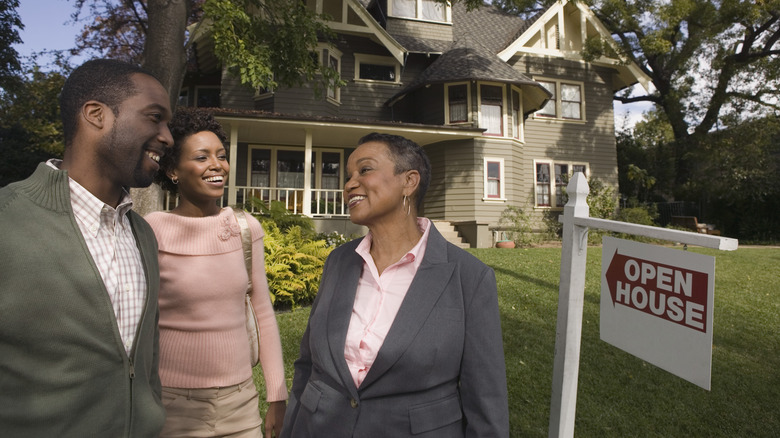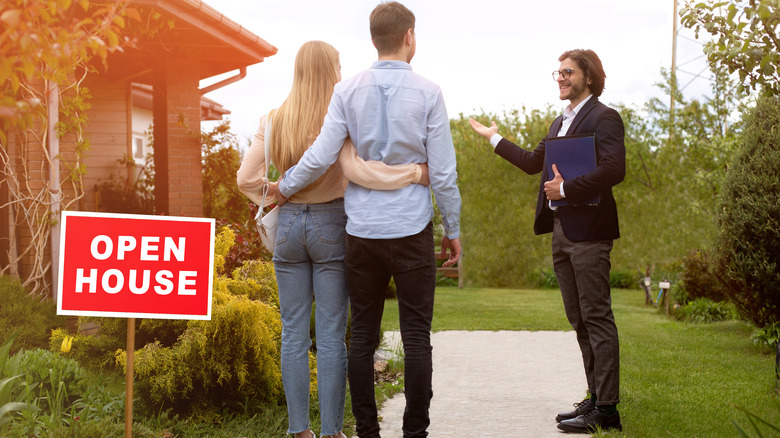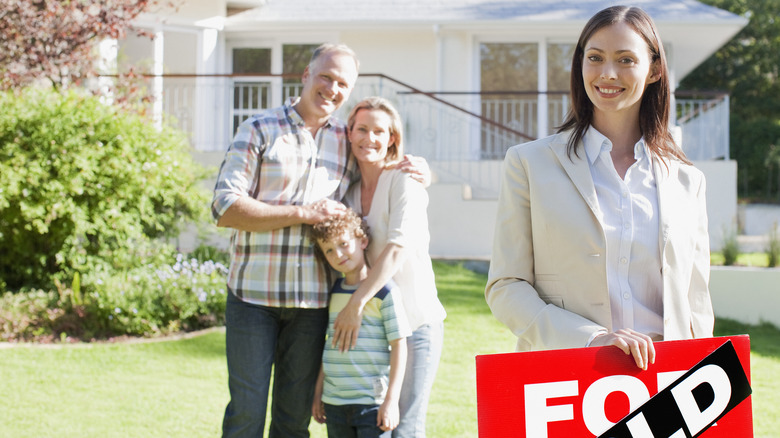The Reason Open Houses In The 1950s Were Always Held On Sundays
Open houses have always been a useful marketing tool in real estate. By providing an opportunity for potential buyers to view a property, feel out the space, and ask questions, they help the progress of a sale. In the 1950s, open houses were primarily held on Sundays for reasons spanning culture, practicality, and leisure activities. Sundays go back a long time as an observed day of rest and leisure in many countries. It's a day when people typically have time off from work and are more likely to engage in recreational activities with their families.
Holding open houses on Sundays in the 1950s allowed potential buyers to visit properties without cutting into their work schedules and other obligations. Families could experience properties together while real estate agents could maximize the number of potential buyers in attendance. In addition to being a free day, Sundays were a common day for religious activities like church attendance, which is why holding open houses on Sundays accommodated potential buyers who wanted to attend services in the morning.
Additional reasons for Sunday open houses
Another reason that open houses in the 1950s were always held on Sundays is that advertisements in Sunday newspapers often had higher circulation and readership. This made it an ideal day to advertise open houses because more people were most likely to see them that day. It is also possible that "blue laws" and their restriction on conducting business transactions on Sundays made it more conducive to have the showing on that day. One of the most attended open houses in this time period was hosted by Howdy Howard in Dallas. He was able to draw in thousands of people with the incentives of free sodas and a Cadillac for whoever ended up being the buyer.
As time went on, open houses became the popular way to show a home on a Sunday afternoon so offers could be received that night or the next day. Sunday remains the best day to hold an open house due to its convenience and ability to attract people. Because it has become traditional practice, potential buyers can maximize the whole day and attend multiple open houses. Real estate professionals and sellers are also more likely to be available and able to dedicate their time to answering questions from potential buyers.
Open houses then and now
The concept of open houses has evolved since it came about in the 1910s. Potential buyers would visit a property for sale with their real estate agent or broker. Eventually, agents started hosting events for multiple prospective buyers to visit a property at the same time to be more efficient. As open houses became common, agents began to advertise seriously to attract more people.
Recently, online adverts and communication have significantly transformed the concept of open houses. Buyers now have access to information about properties in detail even before they visit, from photos to videos. Virtual open houses and tours have also become popular because they allow potential buyers to visit properties without leaving their own homes. While Sundays have historically been the best day for a showing, taking advantage of modern technology as a seller or agent can open up even more chances to sell a property.


